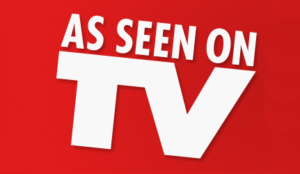 I don’t know about you, but it seems every time I look up, there’s another ad on TV for some kind of drug. According to the National Institutes of Health, the U.S. is one of only two countries in the world that allow drug companies to advertise product claims directly to the public (New Zealand is the other). The growth in these ads began in the 1980s and is accelerating at an alarming rate. In 1990, total spending on drug ads in this country was $47 million and by 1995, it reached $340 million. By 2006, that figure leaped to $4.5 billion. So if you think it’s your imagination there are more ads, it’s not.
I don’t know about you, but it seems every time I look up, there’s another ad on TV for some kind of drug. According to the National Institutes of Health, the U.S. is one of only two countries in the world that allow drug companies to advertise product claims directly to the public (New Zealand is the other). The growth in these ads began in the 1980s and is accelerating at an alarming rate. In 1990, total spending on drug ads in this country was $47 million and by 1995, it reached $340 million. By 2006, that figure leaped to $4.5 billion. So if you think it’s your imagination there are more ads, it’s not.
Some would argue that these ads inform and empower the public. They encourage patients to discuss treatment options with their healthcare provider or at least make them aware of new medications that might benefit them.
But there’s another side. Many ads claim their product is effective, but at the risk of a long list of possible negative (and even deadly) side effects. I cringe every time I hear the litany of side effects announced against a backdrop of images of smiling faces and sounds of soothing or upbeat music.
The problem I have with drug ads is that they push the message that taking a pill is the best way to deal with something. This suggests we overlook the impact of a good diet and exercise or lifestyle changes. And they often oversimplify or overstate the benefits.
All this is happening while the news is filled with stories about the opioid epidemic. The irony can’t be overlooked. Just because it’s advertised on TV doesn’t mean the ad is approved by the government.
I was happy to find that the NIH reports that the proliferation of drug ads can manufacture a disease. The ads are “criticized as contributing to the ‘medicalization’ of natural conditions, cosmetic issues, or trivial ailments, resulting in an overmedicated society” (Direct-to-Consumer Pharmaceutical Advertising, 2011, nih.gov).
That report explains my aversion to the abundance of ordinary occurrences that are now being labeled as “moderate to severe” to imply a treatable condition. When did we start calling simple and normal things a disease?
The danger goes beyond the hypnotism induced by watching drug ads. The pharmaceutical industry exerts considerable influence over Congress. According to the Center for Responsive Politics, gun rights organizations spent $10.5 million lobbying Congress in 2016. In the same year, pharmaceuticals and health products producers spent a whopping $248.7 million.
The Washington Post reports that one drug industry executive, Linden Barber, “played a key role in crafting an early version of the legislation that would eventually curtail the DEA’s power…” (October 15, 2017). In addition, the FDA has relaxed drug ad regulations several times over the past few decades.
Where does that leave us? Faced with the opioid drug problem—which has taken more lives than were lost during the Vietnam War or during the height of the AIDS epidemic. Meantime, drug manufacturers invade our living rooms in increasing efforts to lure us in while handicapping the government agencies that should be policing them.
Although the president has declared a national health emergency, that’s not the same as declaring a national emergency. The small difference in words means a huge difference in the funding available to take meaningful action.
The next time you catch a commercial sweetly lulling you into thinking this pill or that will make your life better, think twice before you “ask your doctor.”



